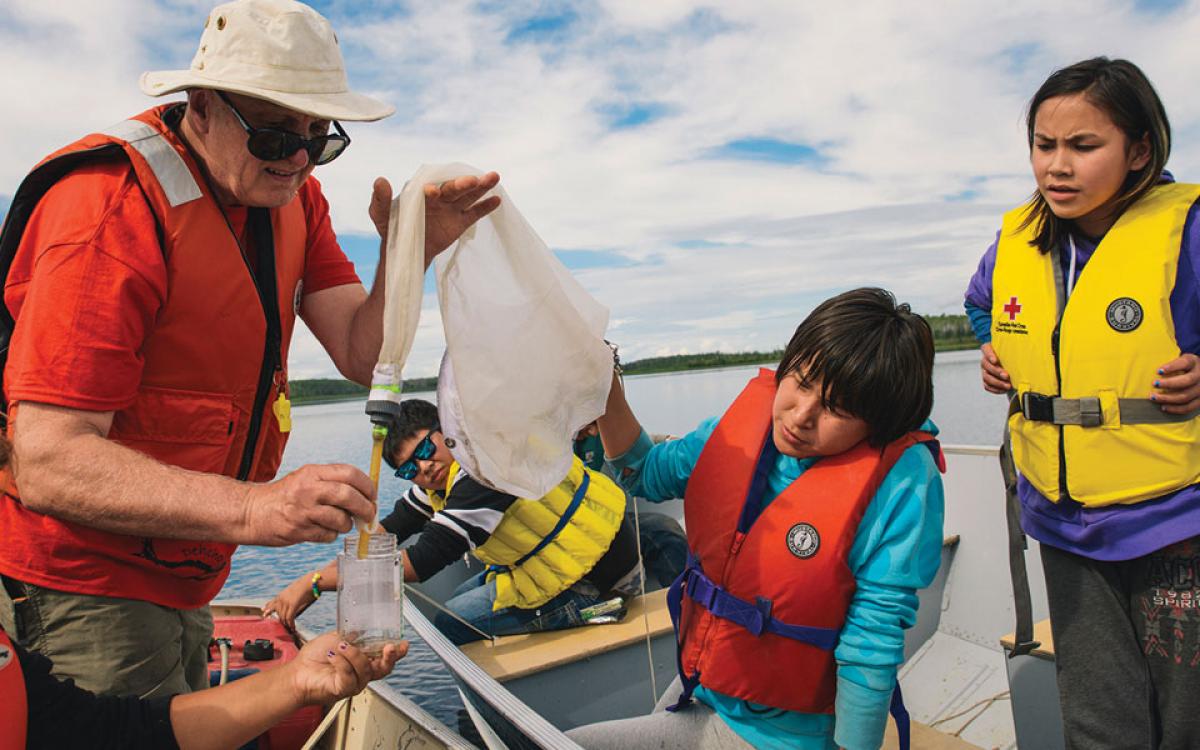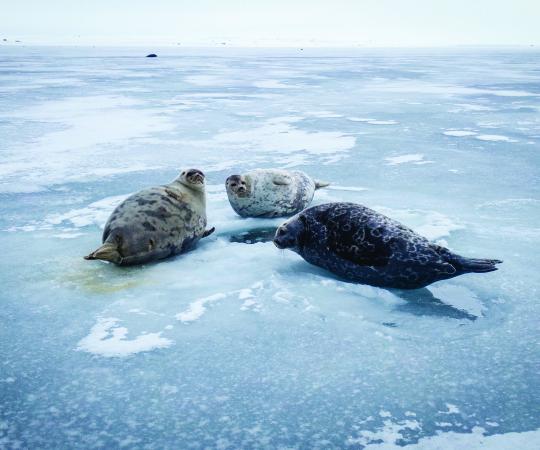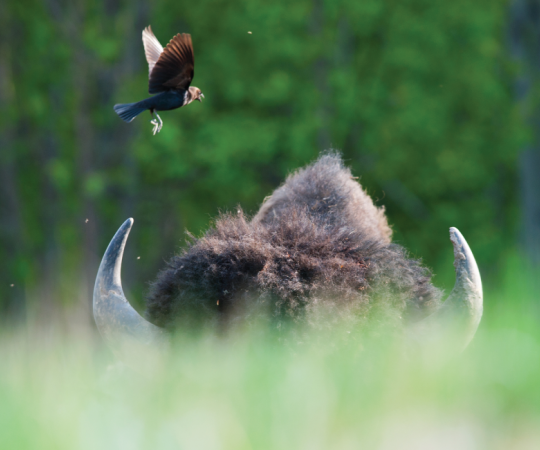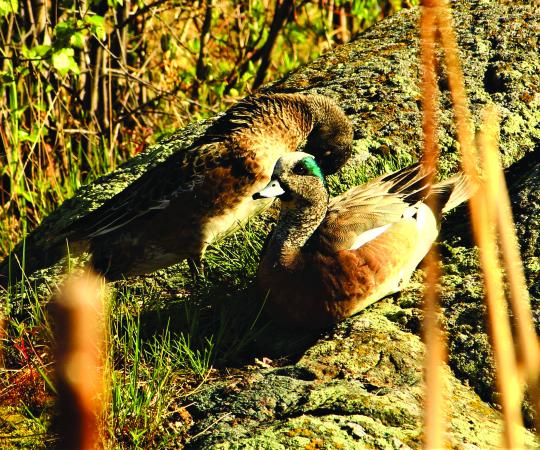The Mackenzie River stretches more than 1,700 kilometres and drains a 1.8-million-square-kilometre swath of land—a fifth of the country. It’s Canada’s largest watershed and the tenth largest in the world, and its main stem and tributaries form the natural highways that connect communities. They are the lifeblood of ecosystems that support people and wildlife throughout the North.
Dubbed the Cold Amazon, the largely intact Mackenzie watershed also helps to regulate Earth’s climate—as both a giant storehouse for carbon and a refrigerator through alternating seasons of ice cover and flowing water. Changes in the watershed affect the entire planet, and the people who live here say many climatic changes have already begun, including melting permafrost that triggers landslides and releases carbon from the previously frozen soil.
For the last century, a patchwork of land-use and management policies have been passed by towns, territories and provinces that often fail to account for the vast watershed’s interconnected features. Water used by British Columbia’s Peace Region’s hydroelectric dams and oil and gas projects, and Alberta’s oil sands, flows north through communities in the Northwest Territories, and eventually spills out across the Mackenzie Delta and into the Arctic Ocean. What happens upstream has major implications for those living downstream.
The Mackenzie River is a classic example of economic interests colliding with rights to clean freshwater and intact ecosystems. That’s why the Northwest Territories signed a bilateral agreement with Alberta in March 2015 to manage the waters they share, complementing similar agreements between the territory and B.C., Yukon and Saskatchewan. Each jurisdiction shares a portion of the watershed and they all signed, in 1997, the Mackenzie River Basin Transboundary Waters Master Agreement. Though it lacks regulatory “teeth” in terms of fines or other forms of enforcement, the agreement is a commitment to work together to maintain the ecological, cultural and economic values of the watershed.
We consulted up and down the valley to develop our water strategy, and that direction was crucial in negotiations with Alberta and others.” Michael Miltenberger
By putting ecological integrity first, the agreement provides an opportunity to improve water management before a watershed is radically transformed. In this way, it’s a unique global achievement. And by building trust and cooperation across borders, and with Indigenous communities throughout the region, it offers a framework for avoiding the intractable disagreements that have pitted citizens against government and industry in landmark cases around the globe, such as the Standing Rock Sioux Tribe’s fight against the Dakota Access pipeline crossing the Missouri River in the U.S.
“We started from the premise that water is a fundamental human right,” says Michael Miltenberger, the territorial environment and natural resources minister during the four-year negotiations with Alberta. He was also instrumental in developing NWT’s water stewardship strategy, which raised the bar on water management by demanding that any water flowing into and through the territory “remain substantially unaltered,” and that water use respect the spiritual, cultural and recreational values of all residents.

Entrenched industries upstream and the involvement of drastically different jurisdictions—in terms of population and water impact—made the agreement difficult to negotiate. But Merrell-Ann Phare, a lawyer who helped the NWT government in negotiations, says that’s also what makes it a great model for similar transboundary agreements worldwide. “Every interest was treated equally—whether it was the right to harvest or trap, or economic interests upstream, such as oil sands or hydroelectric,” she says. No final agreement could be reached until all concerns were addressed.
The agreement also puts Indigenous communities in a lead role when decisions are made that affect their traditional territories. “We consulted up and down the valley to develop our water strategy, and that direction was crucial in negotiations with Alberta and others,” says Miltenberger.
It’s one thing to develop an ambitious water strategy and to sign an agreement, but it’s far more difficult to put those principles into action. “For these agreements to work, all citizens need to be engaged and let governments know they’re watching them,” says Phare, adding Northerners have a huge vested interest in the Mackenzie watershed, since all decisions upstream ultimately affect them.
The agreements don’t preclude outside governments and industry from moving ahead with projects despite downstream opposition—an important consideration when it comes to large-scale projects, such as B.C.’s Site C dam, that Northerners have argued will affect the watershed across borders and far from the project site. Given that reality, the key to ensuring the entire watershed is managed effectively, Phare says, is having up-to-date knowledge to inform evidence-based decisions. And that means gathering knowledge and input not only from academic and government researchers, but from community monitoring programs and the traditional knowledge of elders to assess impacts and changes.
That’s why the NWT government partnered with Toronto-based conservation organization the Gordon Foundation to develop Mackenzie DataStream—an online, open-access platform for sharing monitoring data on the Mackenzie River Basin. Launched in 2015, it allows local community members to get involved in water management, while providing a publicly accessible snapshot of the state of the watershed.
“We’ve been monitoring for decades, but now we can make it accessible for the whole community to see,” says George Low, who coordinates the Aboriginal Aquatic Resources and Ocean Management program for the Dehcho First Nations. “And with help and funding from [the GNWT’s] Environment and Natural Resources, we’re using better equipment to take readings every two hours for more accurate measurements.”
Primarily funded through the federal Department of Fisheries and Oceans, the monitoring program involves nine First Nations and a web of interconnected waterways. These include the Hay and Slave rivers, Great Slave Lake and the Mackenzie River as it winds through the NWT communities of Fort Providence, Jean Marie River and Wrigley. Low says they monitor a range of factors, including water temperature, dissolved hydrocarbons, mercury and other metals, and upload all collected data onto DataStream.
“People want to know their water is safe to drink, and that fish and wildlife are safe to eat,” says Low, adding most people worry about contaminants, climate change and the effects of big dams upstream, like B.C.’s W.A.C. Bennett Dam and Site C. “It doesn’t matter if they’re far away,” he says. “Whenever you stop water like that, and hold it up in reservoirs, you affect things downstream.”
Low says the Mackenzie watershed is still in good shape overall, so his monitoring efforts focus mostly on generating the baseline data that depict a healthy, intact Mackenzie watershed—that way, future monitoring can be compared to that, and any anomalies or impacts can be easily identified. “We have to be vigilant if we want these waters to remain healthy,” he says.
Today, the DataStream website displays information collected by 22 communities in the Mackenzie watershed, and its developers hope others will participate as they see the benefits of open-access data. The argument being that transparency will influence good management decisions—especially if negative impacts are clearly connected to industries and activities upstream.
For policymakers like Michael Miltenberger, tools like Mackenzie DataStream form an all-important bridge between grand vision and on-the-ground implementation. And he’s hopeful about the long-term health of the watershed. “We all drink the water and we all breathe the air,” says Miltenberger. “It’s what binds us all as Northerners.”









